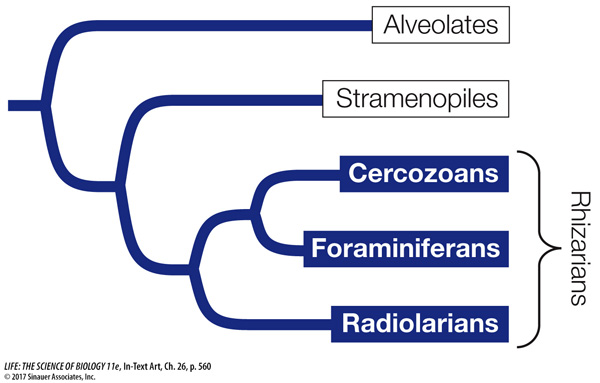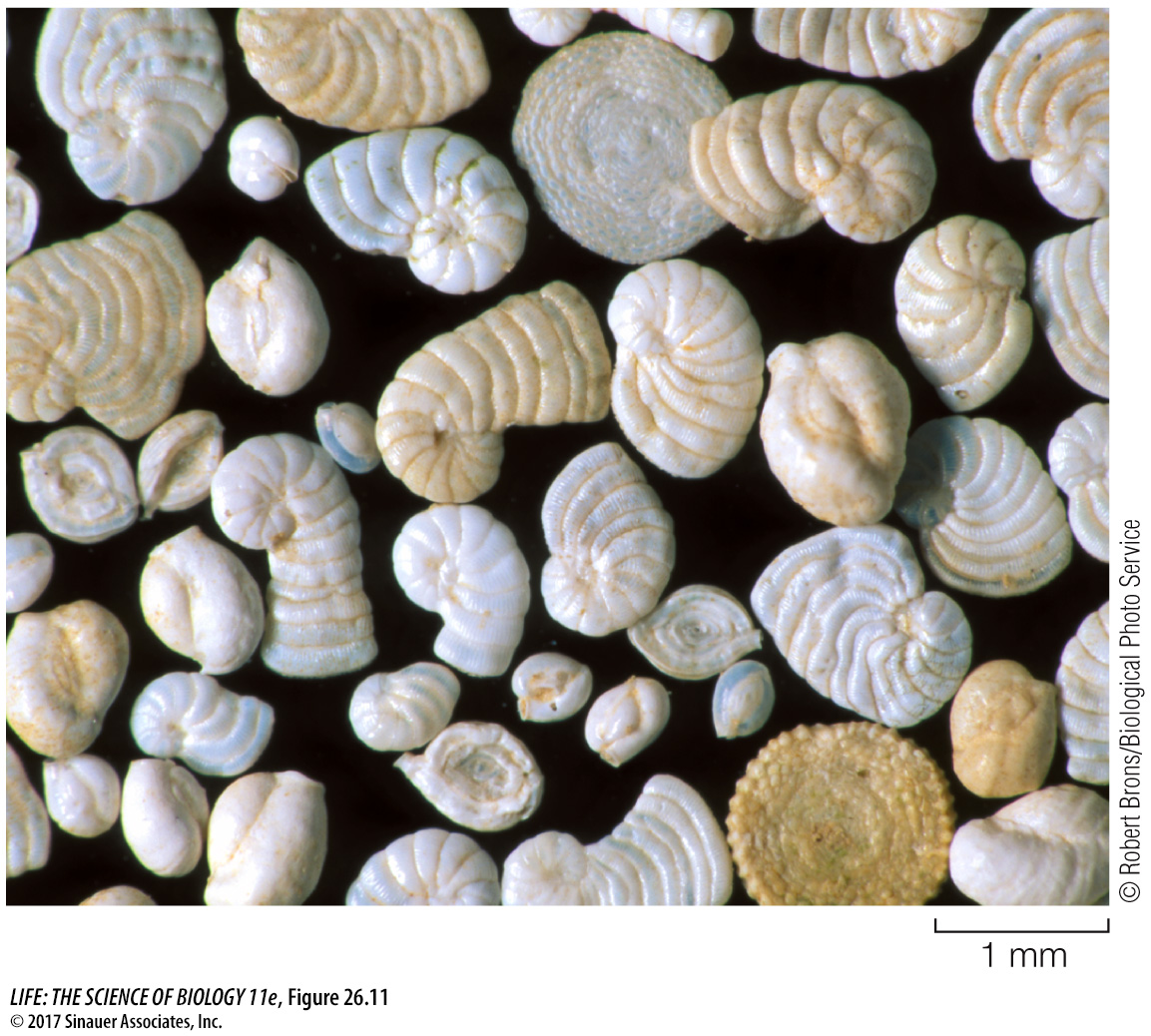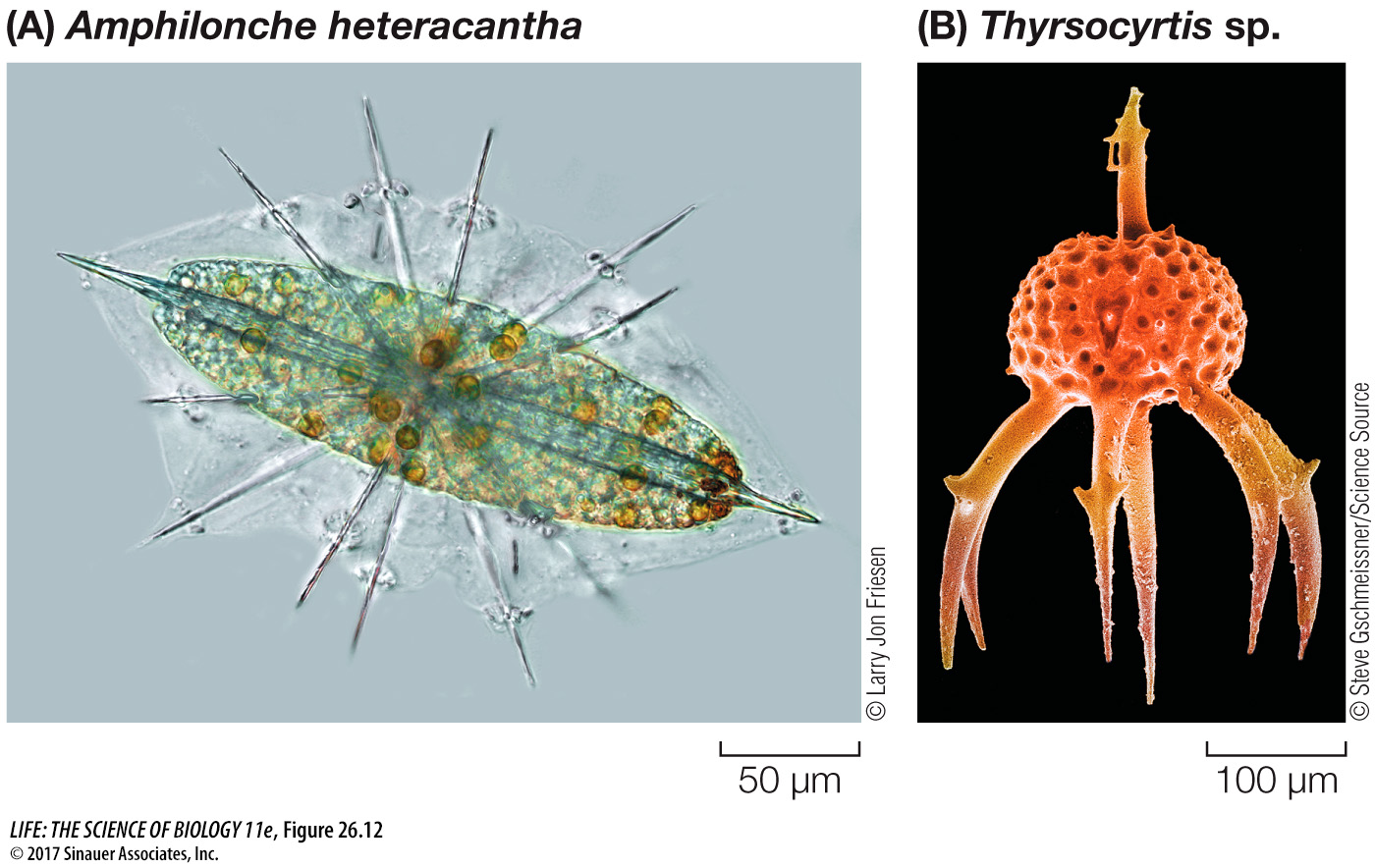Rhizarians typically have long, thin pseudopods

The three primary groups of rhizarians—cercozoans, foraminiferans, and radiolarians—
CERCOZOANS The cercozoans are a diverse group with many forms and habitats. Some are aquatic; others live in soil. One group of cercozoans possesses chloroplasts derived from a green alga by secondary endosymbiosis, and those chloroplasts contain a trace of the alga’s nucleus.
FORAMINIFERANS Some foraminiferans secrete external shells of calcium carbonate (Figure 26.11). These shells have accumulated over time to produce much of the world’s limestone. Some foraminiferans live as plankton; others live on the seafloor. Living foraminiferans have been found 10,896 m down in the western Pacific’s Challenger Deep—

In living planktonic foraminiferans, long, threadlike, branched pseudopods extend through numerous microscopic apertures in the shell and interconnect to create a sticky, reticulated net, which the foraminiferans use to catch smaller plankton. In some foraminiferan species, the pseudopods provide locomotion.
RADIOLARIANS Radiolarians are recognizable by their thin, stiff pseudopods, which are reinforced by microtubules (Figure 26.12A). These pseudopods greatly increase the surface area of the cell, and they help the cell stay afloat in its marine environment.

Radiolarians also are immediately recognizable by their distinctive radial symmetry. Almost all radiolarian species secrete glassy endoskeletons (internal skeletons). The skeletons of the different species are as varied as snowflakes, and many have elaborate geometric designs (Figure 26.12B). A few radiolarians are among the largest of the unicellular eukaryotes, measuring several millimeters across.